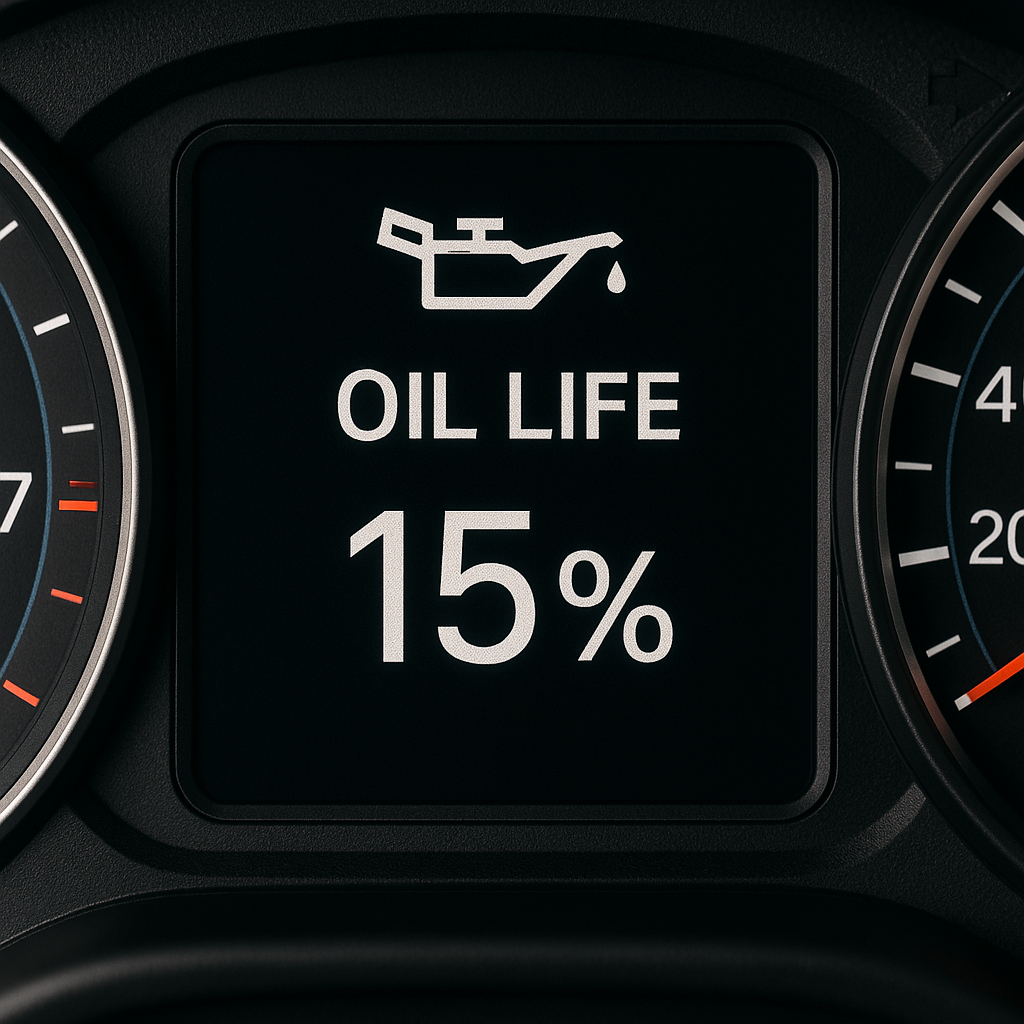Why Understanding “Oil Life” Matters
Many modern vehicles display an “Oil Life” percentage on the dashboard, but few drivers truly understand what it represents. Contrary to popular belief, it’s not a measure of oil level — it’s a calculated estimate of how much useful life remains in your engine oil before it should be changed.
Knowing what oil life means and how it’s determined can help you avoid premature oil changes, save money on maintenance, and most importantly, protect your engine from wear and damage.
What “Engine Oil Life” Actually Means
The oil life indicator is part of your vehicle’s oil life monitoring system (OLMS). Instead of relying on mileage alone, it estimates oil degradation based on real driving data.
Depending on the manufacturer, it can be a simple mileage-based system or a complex algorithm that factors in:
- Engine temperature and operating conditions
- Driving habits (short trips vs. highway)
- Engine load and speed
- Time since last oil change
- Start-stop frequency
For example, GM’s Oil Life Monitoring System (OLMS) or Honda’s Maintenance Minder uses sensors and data from the ECU to adjust service intervals dynamically. In ideal conditions (highway driving, stable temperatures), oil may last 12,000–15,000 km. In short, cold, or stop-and-go trips, it may need changing at just 6,000–8,000 km.
Understanding Oil Life Percentages
When your dashboard reads “Oil Life: 100%”, it means you’ve just performed an oil change and the system has been reset. As you drive, the percentage gradually drops to 0%, signaling that an oil change is due.
Here’s how to interpret those numbers:
| Oil Life % | Meaning | Recommended Action |
|---|---|---|
| 100–60% | Oil is in good condition | No action needed |
| 59–30% | Oil is aging | Plan for a change soon |
| 29–10% | Oil nearing end of life | Schedule service |
| 9–0% | Change due | Replace oil immediately |
Tip: Some manufacturers, like Ford or Toyota, trigger a “Change Oil Soon” warning when the percentage drops below 10%.
What Happens If You Ignore the Oil Life Warning
Engine oil is the lifeblood of your vehicle. It lubricates moving parts, reduces friction, and removes contaminants. As oil ages, it loses its viscosity, detergents, and anti-wear additives, leading to several risks:
- Reduced lubrication – Causes metal-to-metal contact and premature wear.
- Sludge buildup – Thick deposits restrict oil flow, especially in turbocharged engines.
- Overheating – Old oil fails to absorb and dissipate heat effectively.
- Shorter engine life – Prolonged neglect can lead to bearing or camshaft damage.
Even synthetic oils—though more resistant to breakdown—shouldn’t exceed 12 months or the manufacturer’s maximum interval, whichever comes first.
How to Reset the Oil Life Indicator
Every car model has its own reset procedure after an oil change. If the indicator isn’t reset, it will continue showing low oil life even with new oil.
Here are general examples:
For Honda/Acura:
- Turn ignition to ON (II) without starting the engine.
- Press the SELECT/RESET knob until the oil life indicator appears.
- Hold for 10 seconds until it blinks, then hold again until it resets to 100%.
For GM (Chevrolet, GMC, Buick):
- Turn the ignition to ON/RUN.
- Press the Menu button until “Oil Life” appears.
- Hold the Checkmark/Set button until it resets to 100%.
For Ford:
- Turn ignition to ON, do not start engine.
- Hold the Brake and Gas Pedals together for 20–25 seconds.
- Wait until “Oil Life Reset” appears on screen.
Always verify your procedure in the owner’s manual, as steps differ by model and year.
Oil Life vs. Oil Level — The Key Difference
A common misconception is that a low oil life percentage means the oil level is low. These are two separate systems:
| Indicator | Function |
|---|---|
| Oil Life | Measures oil condition and aging |
| Oil Level | Measures oil quantity in the engine |
You can have 100% oil life yet be low on oil due to leaks or consumption. Always check the dipstick or electronic oil level sensor regularly, regardless of the displayed oil life.
What Factors Shorten Oil Life
Your driving style and environment play a huge role in oil longevity. Conditions that shorten oil life include:
- Frequent short trips (engine doesn’t reach operating temperature)
- High RPM driving or towing heavy loads
- Extreme temperatures (very hot or cold climates)
- Idling for extended periods
- Poor fuel quality or dusty environments
If your driving conditions fit any of these, consider changing oil earlier than the indicator suggests — even at 40–50% remaining life.
Conclusion: Trust the System, But Verify Regularly
Oil life monitoring systems are a convenient, technology-driven tool for smarter maintenance — but they don’t replace visual checks and good judgment.
Always:
- Use the manufacturer-recommended oil grade (e.g., 5W-30 full synthetic).
- Check both oil life and oil level periodically.
- Reset the indicator after every oil change.
- Follow your owner’s manual for maximum intervals.
By understanding what your oil life indicator really means, you’ll extend engine life, maintain peak performance, and avoid costly repairs — all with minimal effort.
